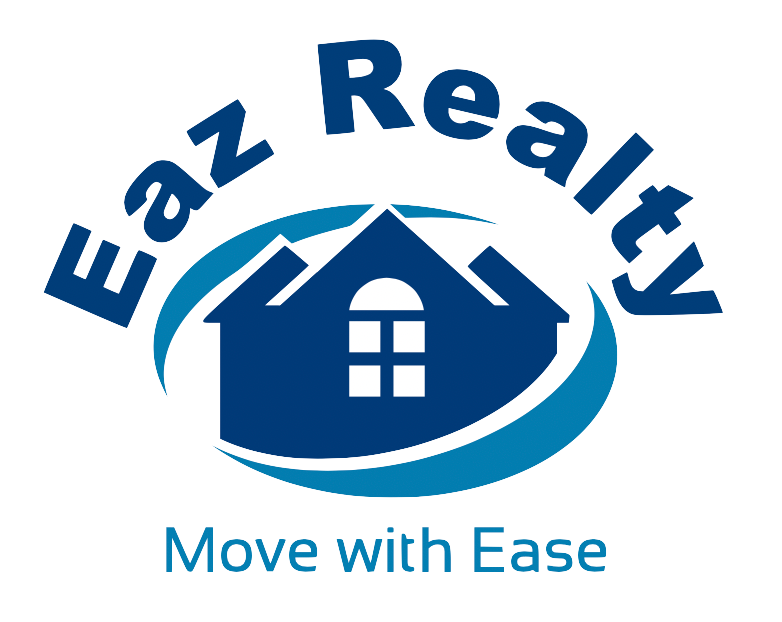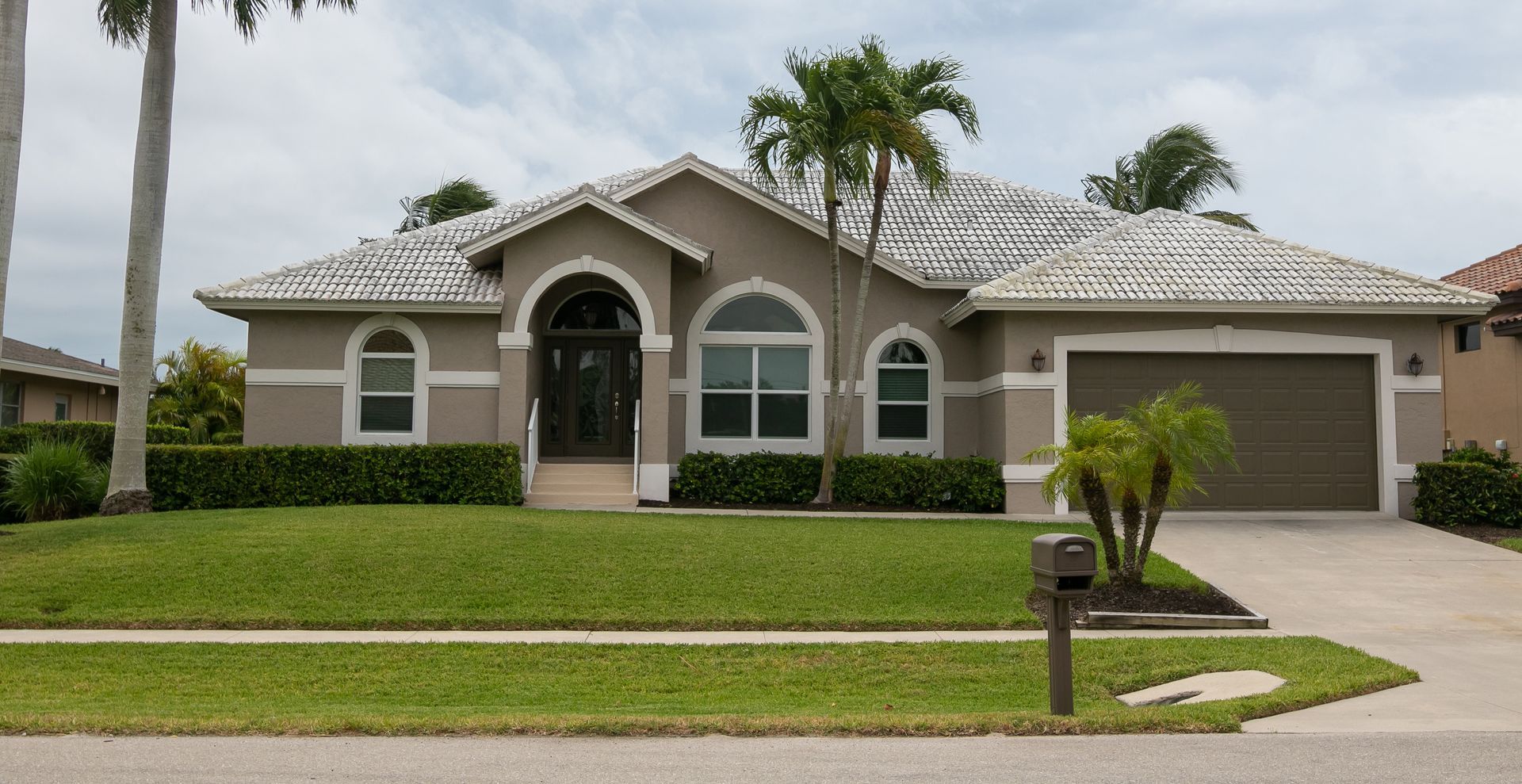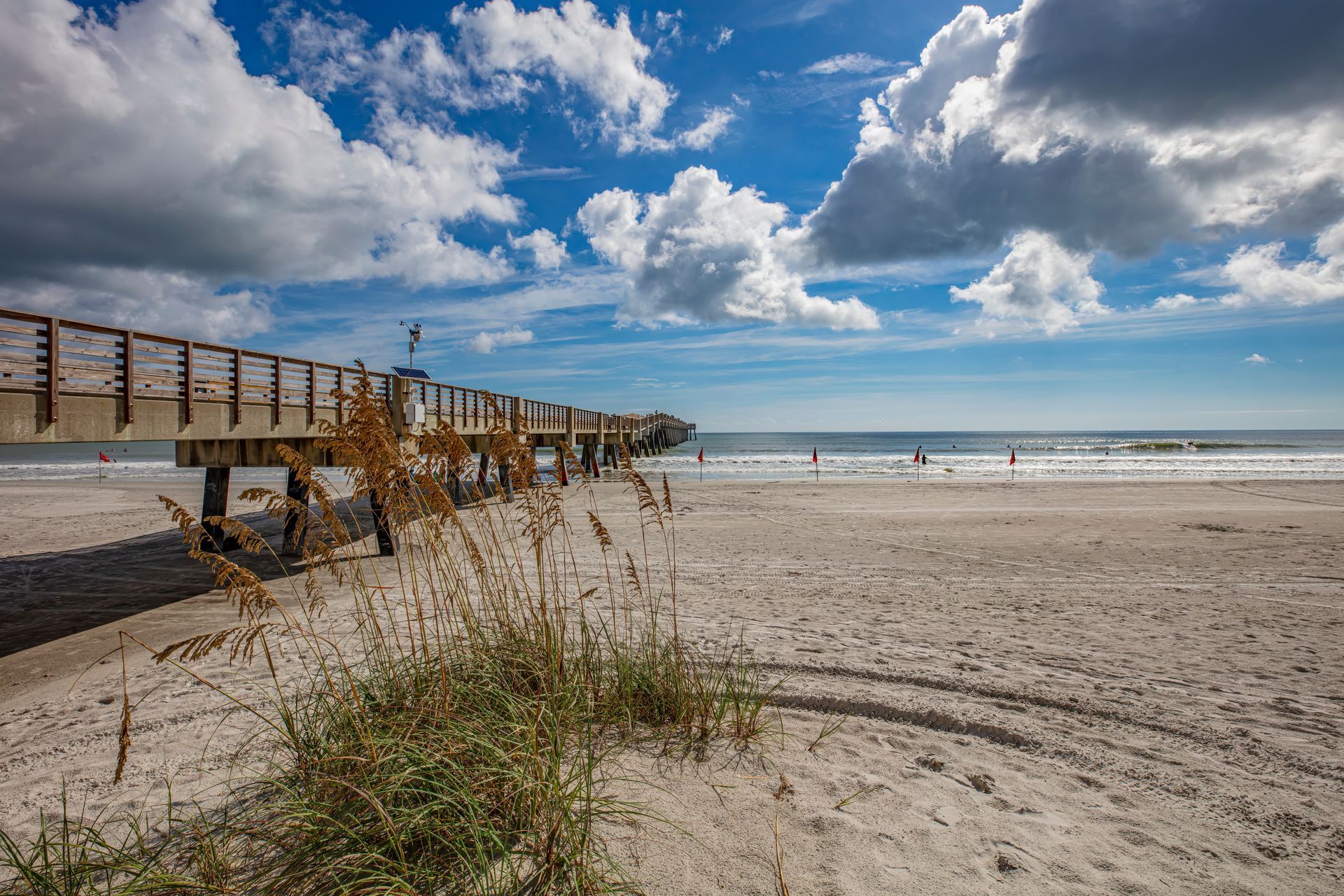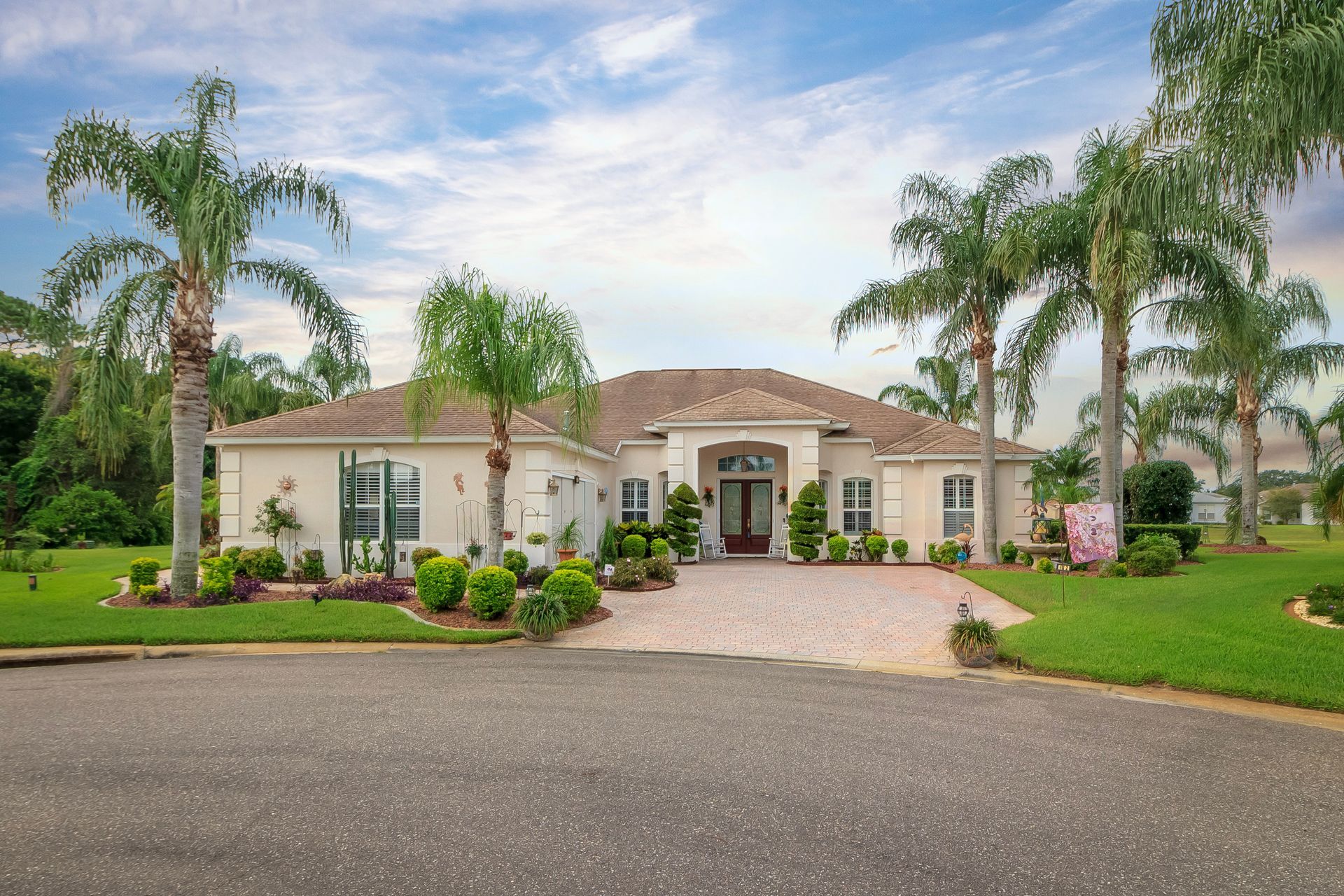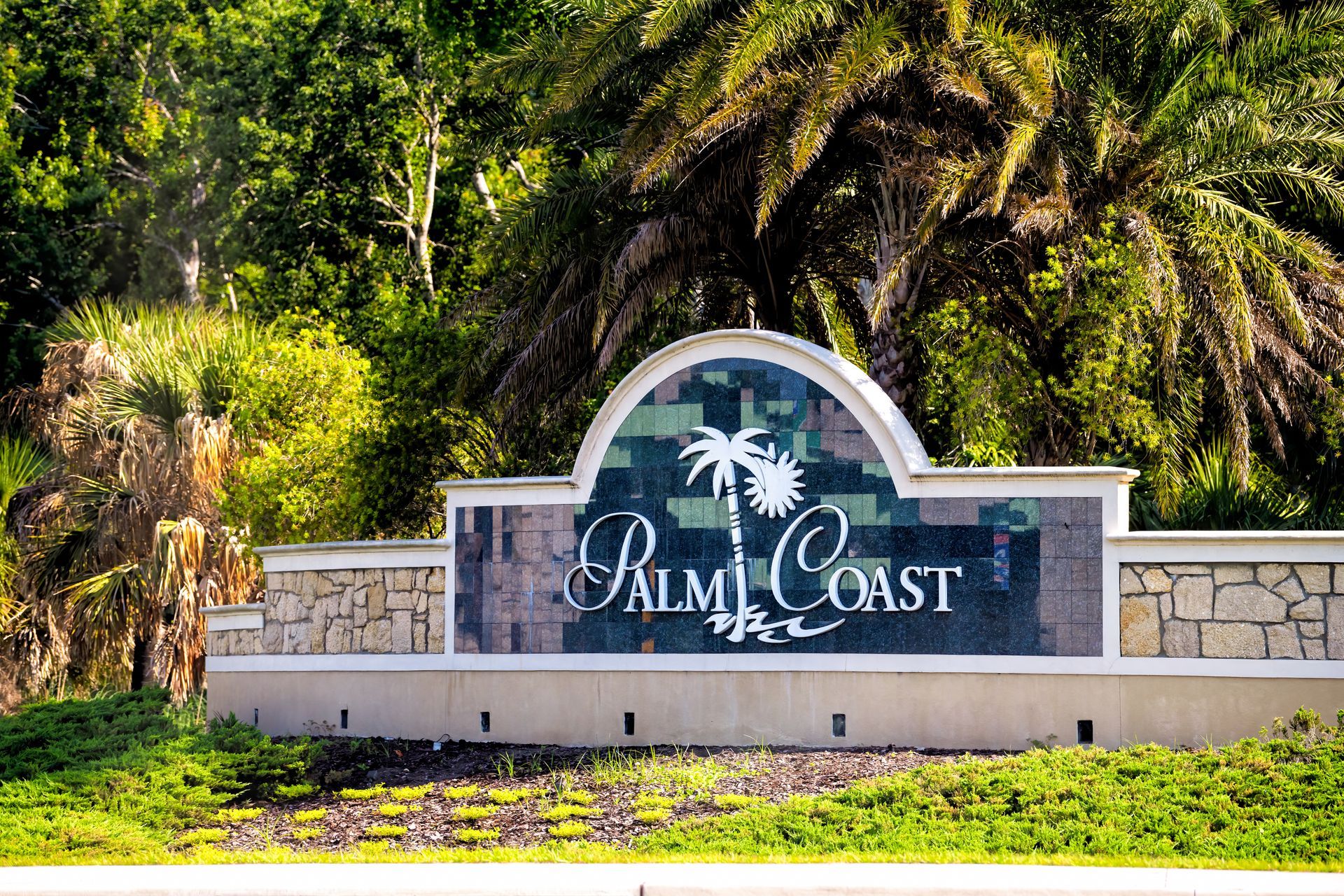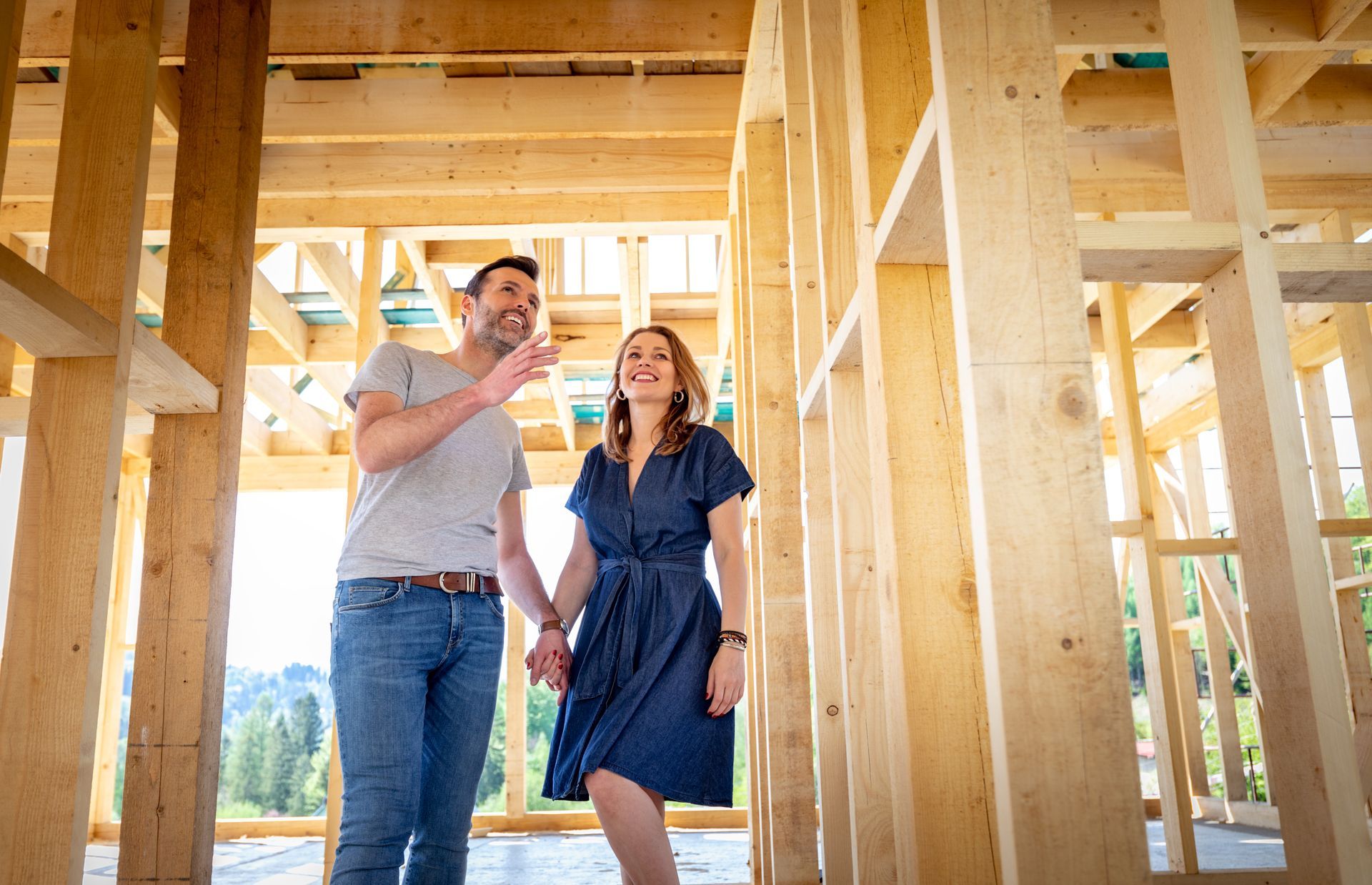The Changing Tide: Understanding Climate Impact on Florida Coastal Real Estate
Key Points
- Florida's coastal property market is increasingly influenced by climate risk factors
- Flood zone designation directly affects insurance costs, resale value, and long-term investment potential
- Sea level rise projections range from 1-8 feet by 2100, with significant impacts expected by 2050
- Insurance costs in high-risk areas have tripled in some Florida markets over the past five years
- Properties with elevation above 10 feet and flood mitigation features maintain stronger value
- Smart buyers are factoring climate resilience into purchase decisions alongside traditional criteria
- Understanding FEMA flood maps, insurance requirements, and adaptation strategies is essential
- Palm Coast's unique geography creates both opportunities and challenges for coastal property owners
You're standing on a beautiful beachfront property in Florida, watching the sunset paint the Gulf or Atlantic in brilliant oranges and pinks. The sound of waves, the salt air, the lifestyle—it's everything you've dreamed about. The asking price seems reasonable, the location is perfect, and you're ready to make an offer.
But there's a conversation that needs to happen first, one that many buyers and sellers find uncomfortable but absolutely critical: how will climate change and sea level rise affect this property's value, insurability, and long-term viability?
This isn't a political question—it's a financial one. Whether you believe climate change is primarily human-caused or part of natural cycles, the physical reality is undeniable: Florida's coastal property values and climate change are now inextricably linked. Insurance companies are raising rates or pulling out of high-risk areas entirely. Mortgage lenders are scrutinizing flood zone designations more carefully. And savvy buyers are doing their homework on elevation, flood history, and adaptation potential before signing contracts.
Here's the thing: understanding these factors doesn't mean abandoning your coastal property dreams. It means making informed decisions, knowing the risks, understanding the costs, and choosing properties positioned to maintain value even as conditions change. Some coastal properties will weather these changes beautifully. Others won't. The difference often comes down to specific, measurable factors you can evaluate before you buy.
Let's explore what's actually happening with Florida's coast, what it means for property values, and how to make smart real estate decisions in this evolving landscape.
Understanding Sea Level Rise: The Data
Sea level rise in Florida isn't a future problem—it's happening now. Understanding the science helps you make informed property decisions.
Current and Projected Changes
Florida has experienced approximately 8 inches of sea level rise over the past century. While that might not sound dramatic, the acceleration matters more than the absolute number.
Recent Acceleration:
- Sea level rise has accelerated significantly since 1990
- The rate of increase is now approximately 1 inch every 3 years in some Florida locations
- Southeast Florida (Miami to Palm Beach) experiences faster rise than the Gulf Coast due to ocean current changes
Projections Through 2050:
- Conservative estimates: 10-17 inches of additional rise by 2050
- Moderate estimates: 17-26 inches by 2050
- Higher-end projections: up to 31 inches by 2050
Long-term Outlook (2100):
- Projections range from 1 to 8 feet depending on global emissions scenarios
- Even conservative scenarios show 2-3 feet of rise
- Southeast Florida could see 6+ feet under higher emission scenarios
What This Means on the Ground
Those numbers translate to real-world impacts:
Tidal Flooding:
- "Sunny day flooding" (flooding at high tide without storms) is increasing
- Areas that flood a few times per year now may flood dozens of times annually by 2050
- Street flooding affects property access, infrastructure, and daily life quality
Storm Surge:
- Rising baseline sea levels mean storm surge reaches farther inland
- Category 3 storm surge today may equal Category 4 impacts in 30 years
- Flood insurance costs reflect these increased risks
Erosion:
- Rising seas accelerate beach erosion
- Properties that were 200 feet from water may be 100 feet or less
- Erosion affects both property size and structural stability
Saltwater Intrusion:
- Rising seas push saltwater into freshwater aquifers
- Affects drinking water quality and well function
- Impacts landscaping and septic systems
Flood Zones: The Classification That Matters
FEMA flood zone maps Florida are the primary tool determining insurance requirements and risk assessment, but understanding them is more complex than most buyers realize.
The Flood Zone Alphabet
High-Risk Zones (Special Flood Hazard Areas):
Zone AE: Areas with 1% annual flood chance (the "100-year floodplain")
- Detailed flood elevations determined
- Mandatory flood insurance with federally backed mortgages
- Typically coastal areas and along rivers/streams
Zone VE: Coastal areas with 1% annual flood chance PLUS wave action
- "V" stands for velocity—includes wave damage risk
- Strictest building requirements
- Highest insurance costs
- Right along coastline where waves can reach
Zone A: 1% annual flood chance, but detailed elevations not determined
- Usually older mapping or areas without detailed studies
- Still requires flood insurance with federal mortgages
Moderate to Low Risk Zones:
Zone X (shaded): 0.2% annual flood chance (the "500-year floodplain")
- Flood insurance not required but recommended
- Lower insurance costs than high-risk zones
- May become high-risk zones as seas rise
Zone X (unshaded): Minimal flood risk
- Outside 500-year floodplain
- Flood insurance typically optional and inexpensive
- Safest designation currently
Why Flood Zones Matter for Property Value
Insurance Costs:
- Zone VE properties might pay $3,000-$8,000+ annually for flood insurance
- Zone AE properties typically pay $1,500-$4,000 annually
- Zone X properties might pay $400-$800 annually
These costs directly affect affordability and buyer pool.
Resale Considerations:
- Properties in high-risk zones have shrinking buyer pools
- Conventional wisdom says "location, location, location"—now add "elevation, elevation, elevation"
- Buyers increasingly factor long-term flood insurance costs into offers
Development Restrictions:
- Building in VE zones requires expensive elevation and design features
- Renovation restrictions can limit property improvements
- Some areas have moratoriums on new coastal development
The Remapping Reality
FEMA updates flood maps periodically, and changes can be dramatic:
Properties Moving Into High-Risk Zones:
- As sea level rises, flood zones expand inland
- Properties previously in X zones may become AE zones
- Suddenly mandatory insurance adds $2,000-$3,000+ to annual costs
The Appeals Process:
- Property owners can appeal zone designations with elevation certificates
- Survey showing property above base flood elevation can reduce insurance costs
- Professional elevation certificates cost $500-$1,500 but may save thousands annually
Palm Coast Specific Considerations
Palm Coast's geography creates unique flood dynamics:
Intracoastal Waterway Proximity:
- Properties along the ICW face rising water on one side, Atlantic influence on the other
- Storm surge can push water from both directions
Canal Systems:
- Extensive canal network throughout Palm Coast
- Rising seas affect canal water levels and drainage
- Properties on canals need extra scrutiny for flood risk
Barrier Islands:
- Flagler Beach and A1A properties face direct ocean exposure
- Higher immediate risk but also higher current values
- Greatest vulnerability to both erosion and surge
Insurance: The Market Reality Check
Florida coastal property insurance has become one of the most significant factors affecting property values and affordability.
The Insurance Crisis
Florida's property insurance market is in turmoil:
Carrier Departures:
- Major national insurers have limited or stopped writing new policies in Florida
- Citizens Property Insurance (state-run insurer of last resort) has grown dramatically
- Smaller carriers have gone insolvent, leaving policyholders scrambling
Rate Increases:
- Homeowners insurance rates have increased 30-60% in some coastal areas since 2020
- Flood insurance costs continue rising with FEMA's Risk Rating 2.0
- Combined insurance costs can exceed $10,000 annually for coastal properties
Coverage Reductions:
- Higher deductibles (often percentage-based: 2-10% of dwelling value)
- Hurricane deductibles separate from regular deductibles
- More exclusions and limitations on coverage
The Two Insurance Requirements
Coastal property owners typically need TWO policies:
Homeowners Insurance:
- Covers wind damage, fire, theft, liability
- Often EXCLUDES flood damage entirely
- Increasingly expensive and difficult to obtain in coastal areas
Flood Insurance:
- Separate policy covering flood damage
- Required by mortgage lenders in high-risk flood zones
- Available through National Flood Insurance Program (NFIP) or private insurers
Many buyers don't realize these are separate costs until closing approaches.
Risk Rating 2.0: The New FEMA System
FEMA's updated flood insurance pricing system (implemented 2021-2022) fundamentally changed the game:
What Changed:
- Old system: rates based primarily on flood zone
- New system: rates based on property-specific flood risk
Individual Risk Factors Now Considered:
- Distance to water source
- Type of water source (ocean vs. river vs. lake)
- Property elevation above flood level
- First floor height
- Foundation type
- Reconstruction cost
Impact on Premiums:
- Some properties saw rates decrease (those with good elevation despite being in flood zones)
- Many saw significant increases (properties with poor elevation)
- Rates now more accurately reflect actual risk—good for market transparency, painful for some owners
Insurance Costs and Property Values
The relationship is direct and measurable:
Buyer Qualification:
- Lenders include insurance costs in debt-to-income calculations
- Higher insurance = lower buying power
- Some buyers are priced out of coastal properties entirely
Comparable Sales:
- Properties with lower insurance costs (better elevation, flood mitigation) sell for premiums
- High insurance cost properties may sit longer or require price reductions
Investment Calculations:
- Rental property investors factor insurance into return calculations
- Cap rates decrease as insurance costs rise
- Some properties no longer make financial sense as investments
Smart Buyer Strategies in the Changing Market
Buying coastal property in Florida climate change era requires additional due diligence beyond traditional factors:
Elevation is Everything
Research Property Elevation:
- Obtain elevation certificate showing height above sea level
- Compare to FEMA Base Flood Elevation (BFE) for the area
- Look for properties at least 2-3 feet above BFE when possible
Why It Matters:
- Every foot of elevation dramatically reduces flood risk
- Elevation affects insurance costs by hundreds or thousands annually
- Properties well above flood elevation maintain value better
Palm Coast Advantage:
- Many Palm Coast properties sit on higher ground than barrier islands
- Elevation varies significantly—don't assume all inland properties are safe
- Check USGS elevation maps for specific properties
Flood History Investigation
Beyond the Seller Disclosure:
- Request 10+ years of flood insurance claims data (available through property insurance disclosure)
- Check FEMA's National Flood Insurance Program claims database
- Talk to neighbors about flooding history
Red Flags:
- Multiple flood claims
- Flooding outside major storm events
- Increasing frequency of flooding
- Recent flood damage repairs
Infrastructure and Drainage Assessment
Community-Level Factors:
- Are stormwater systems adequate and maintained?
- Has the municipality invested in drainage improvements?
- Are there plans for sea walls, pump stations, or other flood mitigation?
Property-Level Features:
- Grading that directs water away from structure
- French drains or other drainage systems
- Sump pumps and backup systems
- Flood vents in crawl spaces or garages
Future-Proofing Your Investment
Look for Properties That:
- Sit on higher ground within their neighborhood
- Have room for elevation if needed (pier/pile foundation or potential to raise)
- Include flood mitigation features already
- Are in communities with adaptation plans
Consider Adaptation Potential:
- Can the property be elevated if needed?
- Is there space to add drainage improvements?
- Can landscaping be modified to absorb more water?
- Are there opportunities to retrofit for resilience?
Financial Planning
Budget for True Costs:
- Get actual insurance quotes BEFORE making offers
- Include both homeowners and flood insurance in calculations
- Factor in potential rate increases over holding period
- Consider deductibles (hurricane deductibles can be $10,000-$50,000+)
Work with Knowledgeable Professionals:
- Real estate agents familiar with climate risk factors (like EAZ Realty)
- Insurance agents specializing in coastal properties
- Home inspectors who assess flood risk and damage
- Attorneys familiar with coastal property regulations
Mitigation Strategies: Protecting Your Investment
Property flood mitigation Florida can significantly reduce risk and maintain value:
Structural Improvements
Elevation:
- Raising entire structure above flood level
- Cost: $100,000-$300,000+ depending on home size
- Can reduce insurance costs by 30-60%
- May be required for substantial renovation in some zones
Wet Floodproofing:
- Designing lower levels to allow water in and out without damage
- Using flood-resistant materials below flood level
- Relocating utilities above flood elevation
- Cost: $10,000-$50,000 typically
Dry Floodproofing:
- Sealing structure to keep water out (limited effectiveness)
- Flood walls, shields, and barriers
- Only suitable for shallow flooding
- Cost: $5,000-$30,000
Drainage and Water Management
Site Grading:
- Regrade property to direct water away from structure
- Create swales to channel water
- Cost: $3,000-$15,000
French Drains and Curtain Drains:
- Subsurface drainage systems
- Intercept water before reaching foundation
- Cost: $2,000-$10,000
Rain Gardens and Bioswales:
- Landscape features that absorb water
- Reduce runoff and flooding
- Cost: $1,000-$5,000
Sump Pumps:
- Remove water from crawl spaces or basements
- Battery backup essential for power outages
- Cost: $500-$3,000
Landscaping Choices
Strategic Planting:
- Native plants with deep roots absorb water
- Rain gardens in low areas
- Avoid impermeable surfaces where possible
Permeable Hardscaping:
- Permeable pavers instead of solid concrete
- Gravel driveways instead of asphalt
- Allows water to infiltrate rather than run off
Return on Investment
Mitigation Often Pays:
- Insurance savings can offset costs over time
- Properties with mitigation sell faster and for more
- Reduces actual flood damage in events
- May qualify for FEMA mitigation grants (up to 75% of costs in some programs)
The Investment Perspective: Long-term Value Considerations
Florida coastal real estate investment requires long-term thinking in the climate change context:
Properties Maintaining Value
Characteristics of Resilient Properties:
- Elevation significantly above current flood levels
- Distance from immediate coastline (500+ feet minimum)
- Robust drainage infrastructure
- Communities with adaptation investments
- Newer construction built to higher standards
Palm Coast Sweet Spots:
- Properties in higher-elevation neighborhoods (check topographic maps)
- Homes along canals with good drainage and elevation
- Properties near coast but well-elevated
- Areas where municipality has invested in infrastructure
Properties Facing Challenges
Higher Risk Characteristics:
- Ground-level construction in flood zones
- Direct oceanfront with erosion history
- Low-lying areas with poor drainage
- Communities with deferred infrastructure maintenance
- Older construction not built to current flood standards
These Properties May:
- See values stagnate or decline
- Become difficult to insure affordably
- Face increasing maintenance and adaptation costs
- Have shrinking buyer pools
The Investment Timeline Factor
Short-term (1-5 years):
- Current market still values coastal proximity highly
- Insurance costs rising but properties still saleable
- Good time to implement mitigation to protect value
Medium-term (5-15 years):
- Climate risk likely priced more directly into values
- Properties with mitigation and elevation command premiums
- Some areas may see values diverge significantly based on specific risk factors
Long-term (15+ years):
- Significant sea level rise impacts likely
- Some currently valuable properties may become difficult to insure or sell
- Well-positioned properties with adaptation maintain or increase value
The Rental Market Consideration
Vacation Rentals:
- Remain popular despite climate risks
- Insurance costs cut into profits
- May face increasing regulation in high-risk areas
Long-term Rentals:
- Demand remains strong in Palm Coast
- Insurance costs affect rental yields
- Properties in lower-risk areas command rent premiums
Regulatory and Policy Considerations
Florida coastal development regulations are evolving in response to climate risks:
Building Code Changes
Stricter Requirements:
- Higher elevation requirements for new construction
- Stronger wind resistance standards
- Flood-resistant materials mandated in certain zones
Renovation Triggers:
- Substantial improvement (>50% of property value) triggers current code compliance
- May require elevation or other expensive retrofits
- Know before buying properties needing major renovation
Local Adaptation Efforts
Palm Coast Initiatives:
- Stormwater master planning
- Infrastructure hardening
- Dune restoration programs
- Coastal resilience planning
What to Research:
- Has the city invested in your target neighborhood?
- Are there planned improvements or assessments?
- What's the long-term adaptation strategy?
Federal Policy Impacts
FEMA Map Updates:
- Periodic remapping changes flood zones
- Properties can move from low to high-risk designation
- Appeals process available but requires documentation
National Flood Insurance Program Changes:
- Risk Rating 2.0 implementation ongoing
- Potential future program reforms
- Subsidy reductions for some properties
Having the Conversation: Sellers and Buyers
Climate risk real estate disclosure Florida is evolving, and transparency serves everyone:
For Sellers
Disclosure Obligations:
- Florida law requires disclosure of known flooding
- Flood insurance claims history must be disclosed
- Elevation certificates should be provided if available
Marketing Climate-Resilient Features:
- Highlight elevation advantages
- Showcase mitigation investments
- Provide documentation of improvements
- Share community adaptation plans
Pricing Considerations:
- Properties with better risk profiles can command premiums
- High insurance costs should be factored into pricing
- Transparency about costs builds buyer confidence
For Buyers
Questions to Ask:
- What is the exact elevation of the property?
- What flood zone is it in (current and proposed)?
- Any flooding history (even minor events)?
- What are actual insurance costs (get quotes)?
- What adaptation measures are in place?
- What are the community's long-term plans?
Due Diligence Checklist:
- ☐ Obtain elevation certificate
- ☐ Review FEMA flood maps (current and preliminary)
- ☐ Get actual insurance quotes from multiple carriers
- ☐ Research flood history (claims, neighbor interviews)
- ☐ Assess drainage and site conditions
- ☐ Review community adaptation plans
- ☐ Calculate total cost of ownership including insurance
- ☐ Consider climate risk in resale potential
The Bottom Line: Informed Decisions in a Changing Market
Florida's coastal real estate market isn't disappearing—it's evolving. Climate change and property values are now inseparable considerations, but that doesn't mean coastal property is a bad investment. It means being smarter, more selective, and more realistic about risks and costs.
The most successful coastal property buyers and owners in the coming decades will be those who:
Understand the Risks:
- Sea level rise is occurring and will continue
- Flood zones and insurance costs reflect real risks
- Some properties will maintain value better than others
Make Informed Choices:
- Prioritize elevation and flood mitigation
- Factor insurance costs into financial planning
- Choose properties and communities with adaptation potential
Take Action:
- Implement mitigation strategies
- Stay informed about regulatory changes
- Work with professionals who understand climate risk
Think Long-term:
- Consider holding period and resale potential
- Understand that the market is pricing climate risk more accurately
- Choose properties positioned to weather changes
Palm Coast offers unique advantages in this landscape—diverse topography, growing community, and local government engagement with adaptation planning. But even here, property-specific factors make enormous differences in long-term value and insurability.
Working with EAZ Realty: Climate-Informed Expertise
At EAZ Realty, we believe informed clients make better decisions. Understanding climate risks and opportunities is now fundamental to coastal real estate expertise.
Our Commitment:
- Providing accurate elevation and flood zone information
- Connecting you with insurance professionals for real cost estimates
- Identifying properties with strong long-term value potential
- Transparency about risks and adaptation strategies
Palm Coast Market Knowledge:
- Deep understanding of local elevation variations
- Relationships with local mitigation contractors
- Knowledge of community adaptation initiatives
- Experience with both resilient and challenged properties
Your Partner in Smart Coastal Investment: Whether you're buying your dream home or making an investment, we help you navigate climate considerations alongside traditional real estate factors. The goal isn't to avoid coastal property—it's to choose wisely within the coastal market.
FAQs About Climate Change and Florida Coastal Property
Will all Florida coastal property lose value due to sea level rise?
Not all, but risk factors will increasingly differentiate property values. Properties with good elevation, flood mitigation, and distance from immediate coastline will maintain or increase value. Properties in high-risk areas with poor elevation may struggle. Location within the coastal area matters more than ever.
How much should I budget for flood insurance?
This varies enormously by property. In high-risk VE zones, expect $3,000-$8,000+ annually. In AE zones, typically $1,500-$4,000. In lower-risk zones, $400-$1,000. Always get actual quotes for specific properties before purchasing—don't rely on estimates.
Can I still get a mortgage for property in a flood zone?
Yes, but lenders will require flood insurance, and insurance costs factor into debt-to-income calculations. Some lenders are becoming more cautious about high-risk coastal properties, particularly for investment properties.
Are there grants or assistance for flood mitigation?
Yes. FEMA offers Hazard Mitigation Grants covering up to 75% of mitigation costs in some cases. Florida Division of Emergency Management has programs. Palm Coast may have local assistance. Research before undertaking expensive mitigation projects.
Should I avoid all coastal property?
No. Coastal property can still be an excellent investment with proper due diligence. Focus on elevation, flood mitigation, insurance costs, and long-term community adaptation plans. Work with knowledgeable real estate professionals who understand these factors.
How can I check a property's elevation?
Request an elevation certificate from the seller. Order a new elevation survey ($500-$1,500). Use USGS topographic maps for general elevation data. Your real estate agent can help obtain this information during due diligence.
FAQs About EAZ Realty
Does EAZ Realty specialize in climate-resilient properties?
We specialize in Palm Coast and Flagler County real estate with particular expertise in coastal properties and climate risk factors. We help clients understand flood zones, elevation, insurance implications, and long-term value considerations.
Can you help me find properties with good elevation and flood mitigation?
Absolutely. We can search specifically for properties with favorable elevation, existing mitigation features, and lower flood risk. We also help evaluate mitigation potential for properties you're considering.
Do you work with buyers concerned about climate risk?
Yes, many of our clients prioritize climate resilience alongside traditional factors like location and price. We provide comprehensive information about flood zones, elevation, drainage, and community adaptation to inform your decision.
Where is your office located?
We're located at 160 Cypress Point Pkwy, Suite B104, Palm Coast, FL 32164, serving all of Flagler County and surrounding areas.
How can I learn more about specific properties and their climate risks?
Contact us at (386) 585-4833 or visit www.eazrealty.com. We provide detailed property information including flood zone designation, elevation data when available, and our professional assessment of climate-related risks and opportunities.
Do you only sell coastal properties?
No, we handle all types of residential and commercial real estate in Palm Coast and Flagler County. Whether you want beachfront, inland, or something in between, we help you find properties that meet your needs and risk tolerance.
Ready to make an informed decision about coastal property in Palm Coast? Contact EAZ Realty today at
(386) 585-4833 or visit
www.eazrealty.com. Let us help you find property that balances your lifestyle goals with smart long-term value considerations. We're here to ensure you understand both the opportunities and realities of Florida's evolving coastal real estate market.

